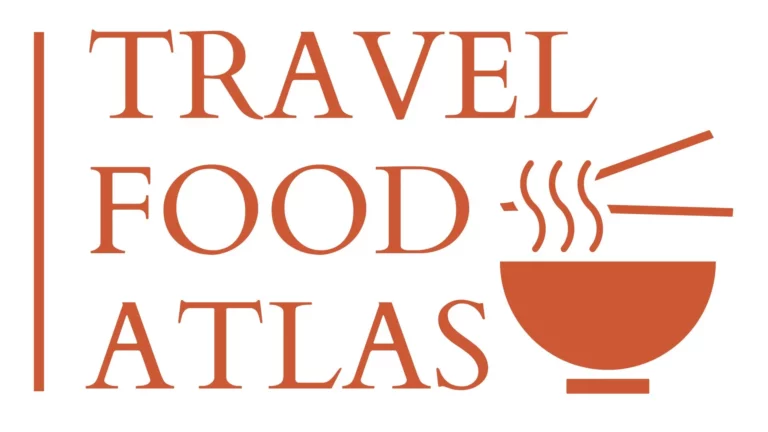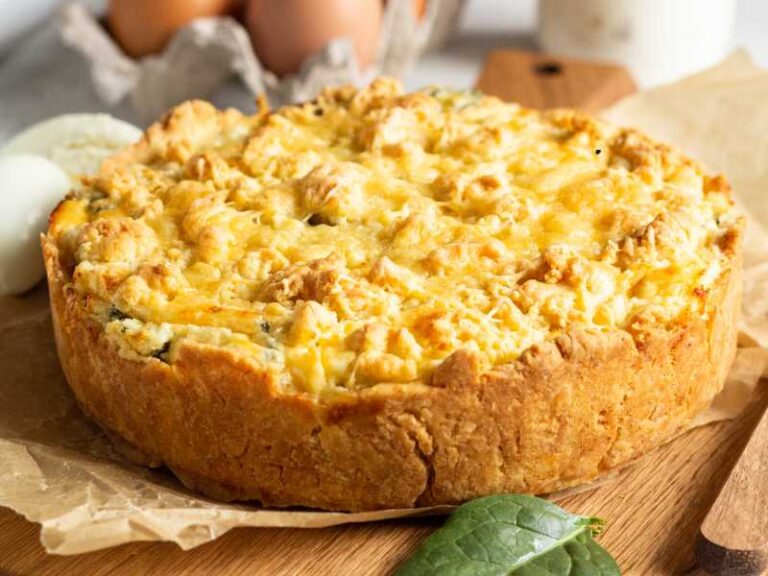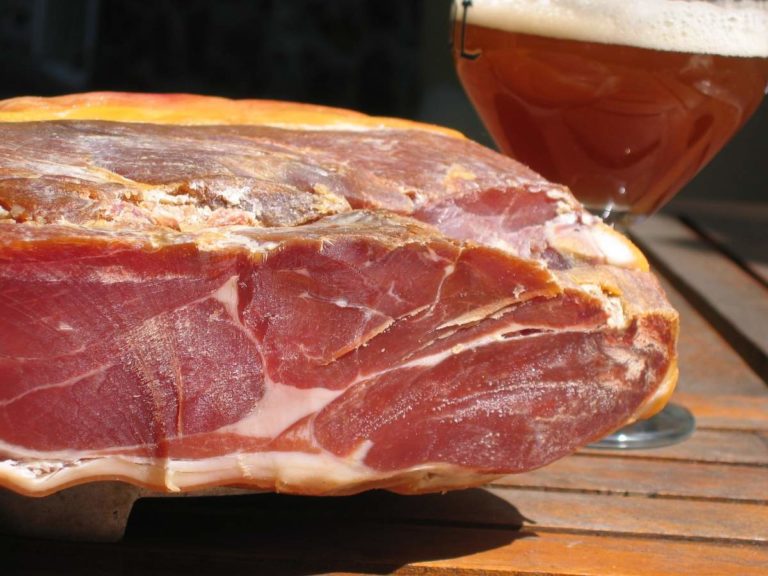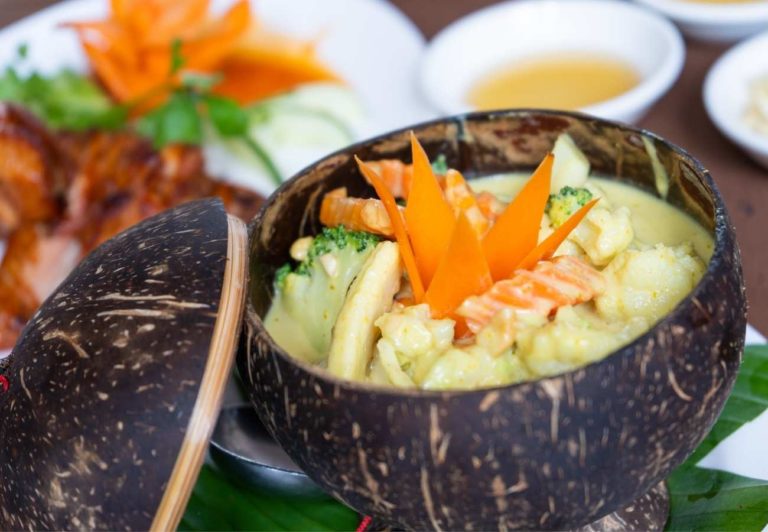Hungarian Food: 15 Traditional Dishes of Hungary
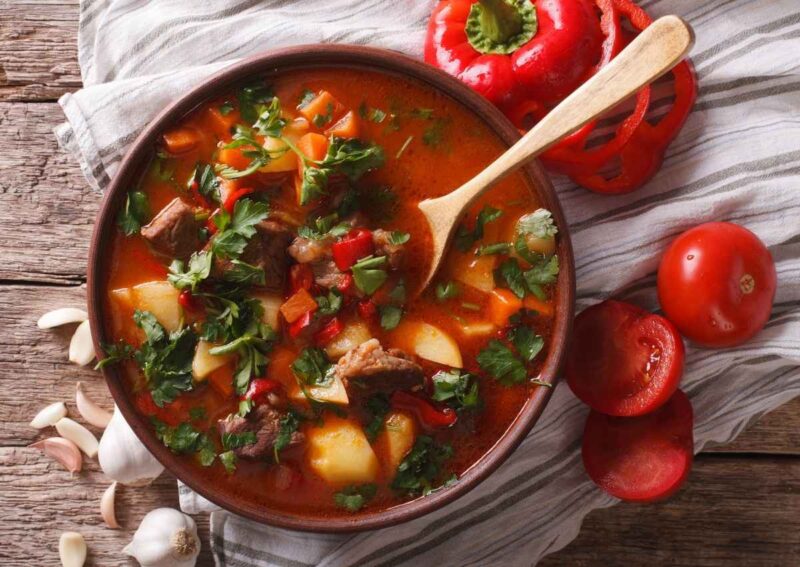
Hungarian food has a lot of similarities with other Eastern European countries in that meat, potatoes, vegetables, cheeses, soups and stews are common staples. With a climate that sometimes necessitates keeping warm, especially in the winter, hearty meals of meat, vegetables and potatoes have become a tradition.
Hungarian food can be spicy and elaborate, but paprika is without a doubt their favorite spice. What may be more surprising about Hungarian cuisine is the prominence fancifull desserts, many of which are featured within this list.
Lángos
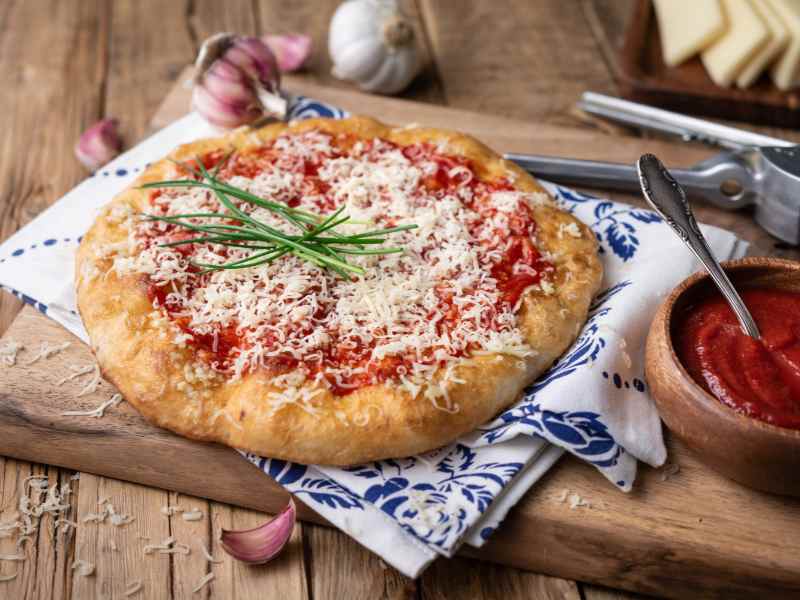
It is impossible to not talk about Lángos (or Langosch) when discussing Hungarian food. Lángos are flat cakes fried in a large pan with plenty of fat. Whether savory or sweet, these delicious flatbreads can be prepared for every palate and appetite.
The traditional recipe, on the other hand, comes with significantly less chichi: a little garlic water for the dough, sour cream and grated cheese as a topping. Lángos is one of the most eponymous dishes of Hungarian cuisine.
Gulyás (Goulash)
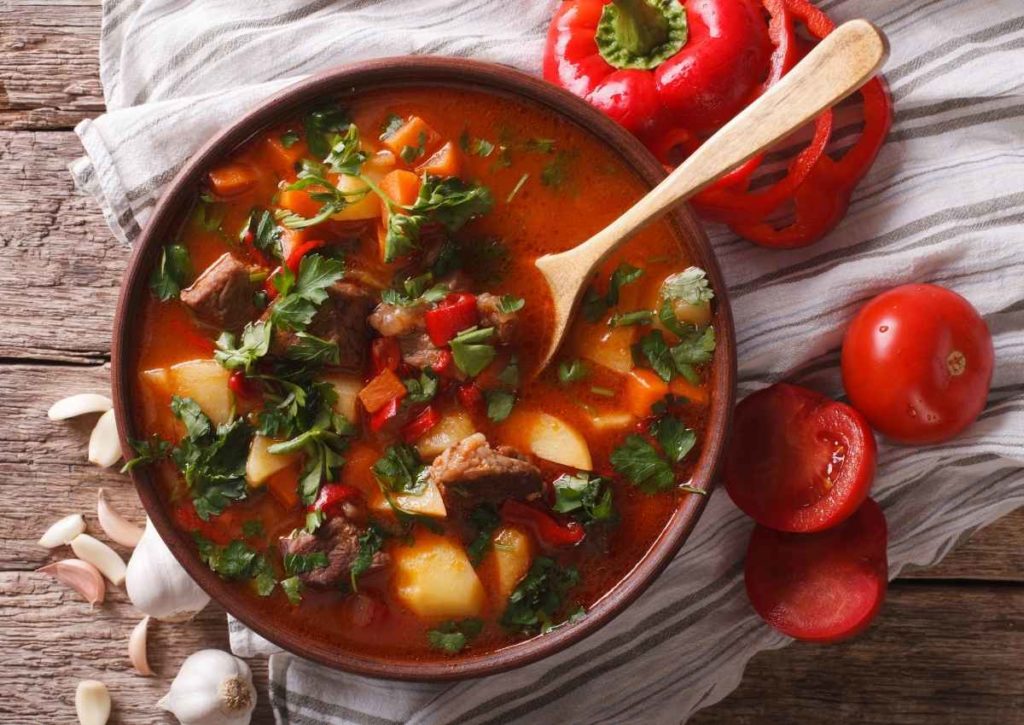
Gulyás is one of the most recognized dishes of Hungary, perhaps due to the fact that it brings together several of Hungary’s most typical staples, including the ever popular paprika.
Its name comes from the Magyar Gulyas, which was the name of the shepherds who tended the cattle in the Hungarian plain. They prepared the goulash in a large iron cauldron, where they added the beef and other ingredients such as tomato, celery, potatoes, white carrot, paprika and bay leaves.
Somlói Galuska

Somlói Galuska is an elaborate dessert made from a sponge cake base, chocolate cream, walnut kernels and whipped cream, often with a little rum too, depending on how it is made.
The “dumpling from Somló”, as it is sometimes known, was dreamed up in 1950 by Károly Gollerits, the main waiter of the Gundel restaurant. 8 years later it was made by the confectioner, Béla Szőcs, for the Brussels World’s Fair where he impressed everyone with the sweets. Since then, it has been one of the most important dishes in Hungarian cuisine and there are many interesting variations to discover.
Stuffed Cabbage
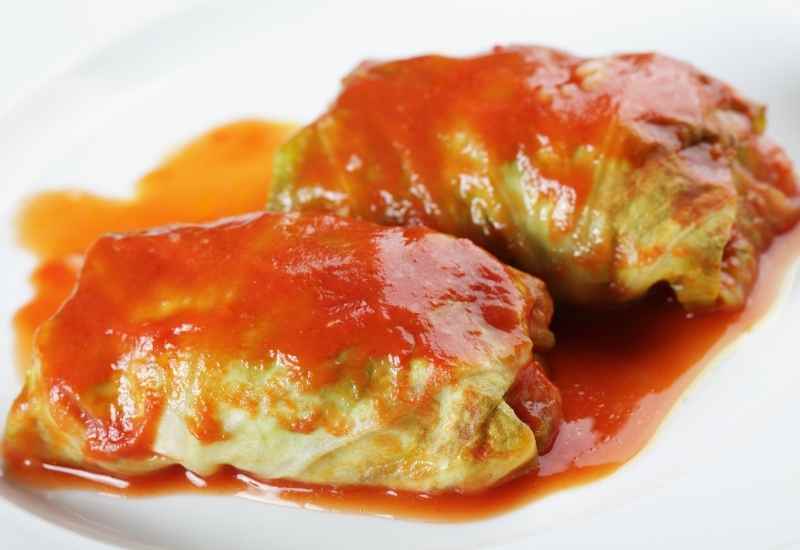
Though popular throughout Central and Eastern Europe, the Hungarian version of Stuffed Cabbage is usually made from fermented cooked cabbage filled with minced pork and rice, and flavored with sour cream, pepper and paprika.
Stuffed cabbage is most commonly eaten during Easter and Christmas, but is of course eaten occasionally at other times of the year. You can also find the dish on the menus of many roadside eateries and restaurants.
Kolbász (Sausage)

Kolbász is a slightly spicy sausage that can be served for breakfast, lunch and dinner, and appears in many salads, stews and soups. They tend to be either boiled, cured or smoked.
Kolbász is the umbrella term for Hungarian sausage and many different varieties exist. Csabai kolbász is a spicy paprika-flavored sausage, Gyulai kolbász is a beech wood smoked sausage from the city of Gyula, and Majas hurka is a boiled liver sausage.
Uborkasaláta
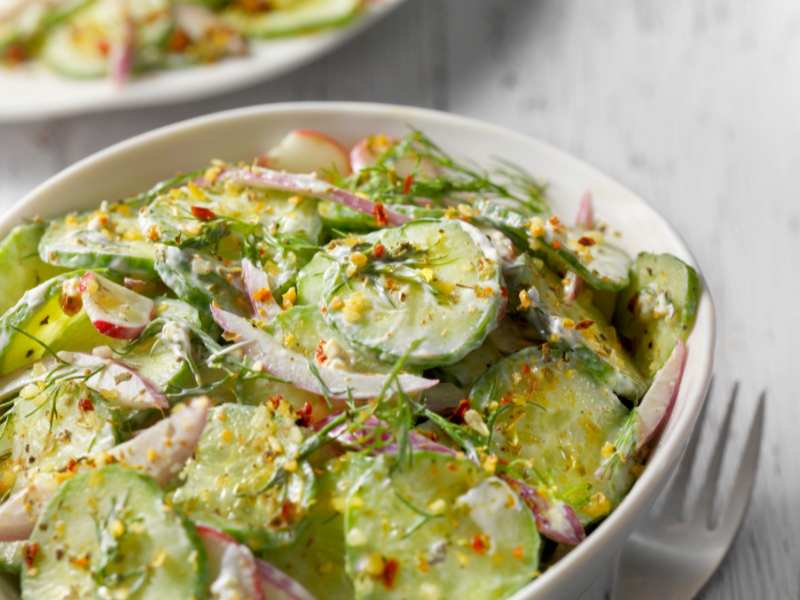
Uborkasaláta is a refreshing cucumber salad mixed with dill, vinegar, and sour cream, giving it a slightly acidic and sour taste. Paprika and ground black pepper are sprinkled on top to bring a final pop of color and flavor to the dish.
Krémes
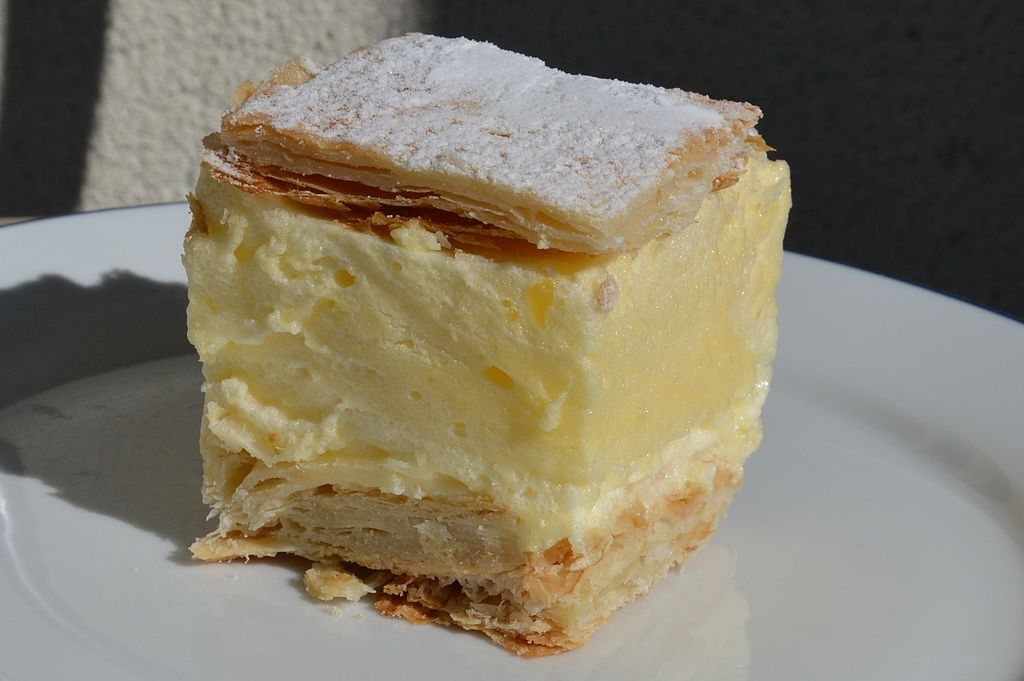
Krémes, also known as “creamy” in Hungarian, is a dessert made up of two thin, flakey layers of pastry, typically filled with vanilla custard cream.
Krémes is one of the most popular pastry desserts in Hungary and is wonderfully airy, messy, creamy and rich.
Beef Stew (Marhapörkölt)

Hungarian Beef Stew is similar to Goulash except for the lack of paprika and minor differences in its preparation.
Beef stew uses meaty chunks of beef, carrots, potatoes, stock and some good red wine to develop a hearty flavor while cooked for a number of hours. It is a deeply warming dish enjoyed on dark winter nights.
Hortobágyi Pancakes
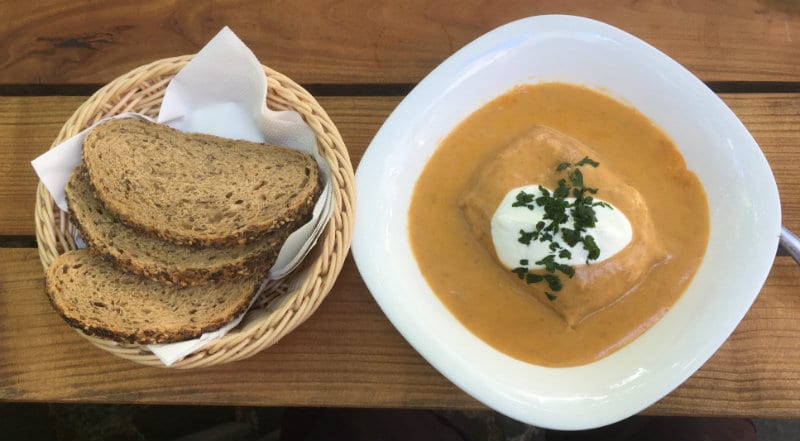
Hortobagy pancakes (or Hortobágyi palacsinta) consist of a meat stew stuffed into a pancake before being oven baked and served with sour cream. Thick slices of homemade bread are served alongside to soak up the sauces.
Rigó Jancsi
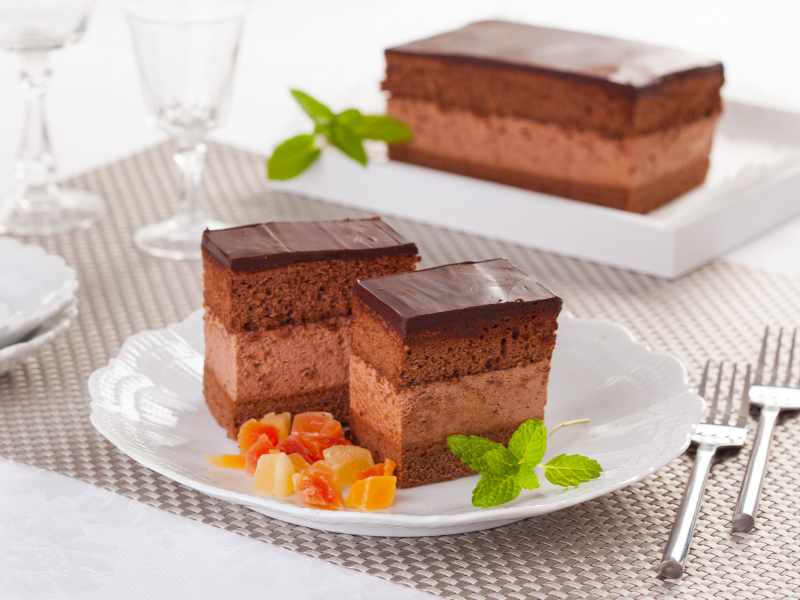
Rigó Jancsi is a dessert from the 19th century that consists of double layers of chocolate sponge, held together by a mousse-like cocoa cream filling.
More than just a dessert, it is an incredibly attractive dish that resembles the prosperous, decadent life of the 19th century in the Austro-Hungarian Empire.
Chicken Paprika (Paprikash)
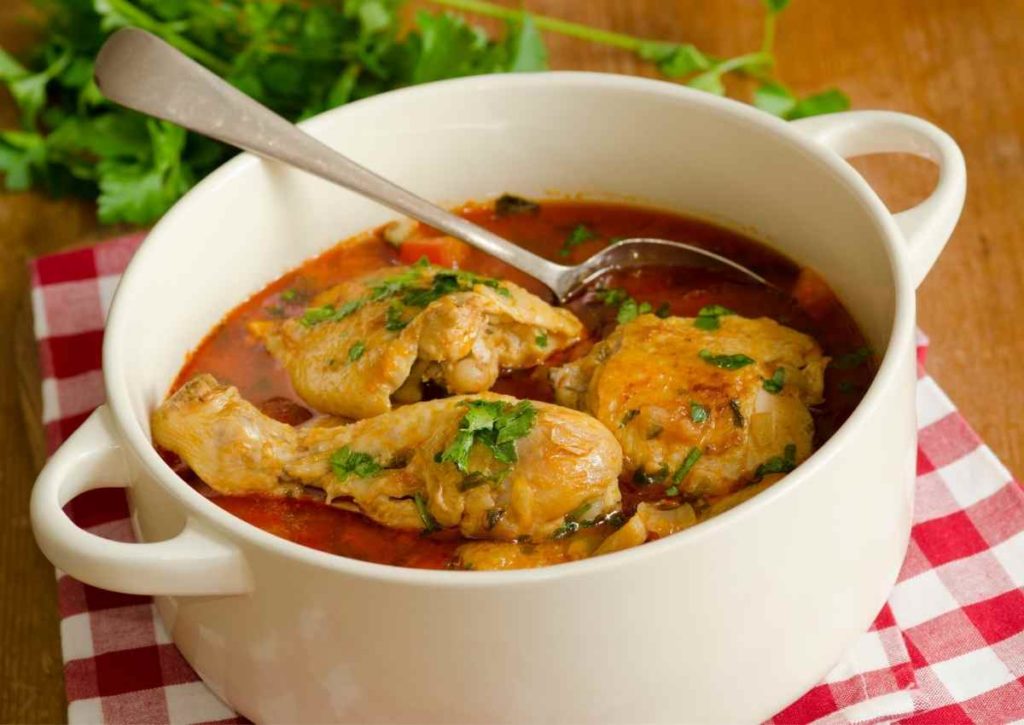
Chicken paprika is a hot-pot style dish consisting primarily of chicken legs in a creamy stew. Other ingredients include paprika (of course), garlic, onion, sour cream and other seasonings.
Previously, paprikash was prepared from adult chickens to give the dish its characteristic rich flavor, but recently Hungarians are moving away from this tradition. Now for the preparation of paprikash separate parts are used, chicken breasts or legs.
Halaszle
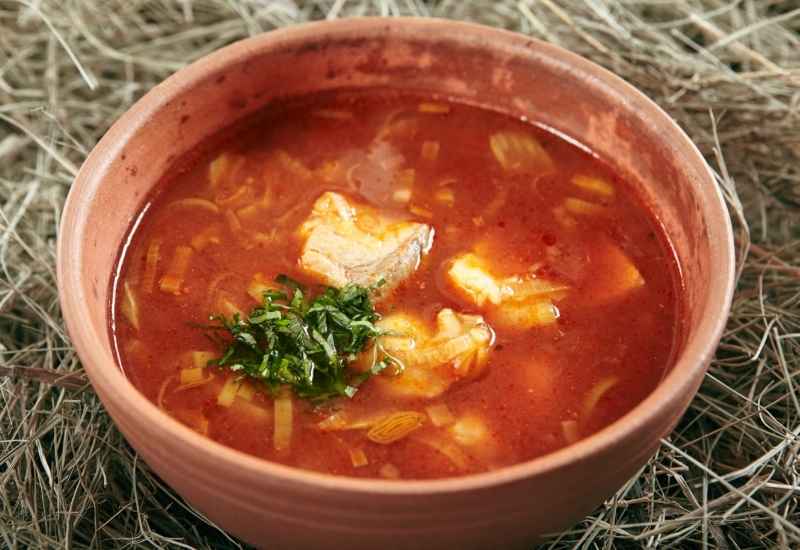
Halaszle is the Hungarian national fish soup, which can be prepared with any river fish, but most commonly it is made with carp. Halaszle also contains a large amount of paprika, which gives it a bright red color and its distinctive smell.
There is an important point in the halaszle cooking process that makes the soup unique. After cooking, the fish broth is filtered and only afterwards a crushed mass of onions, fish and vegetables is added to it (mainly tomatoes are used). The soup is seasoned last, after the fish is cooked.
Húsleves
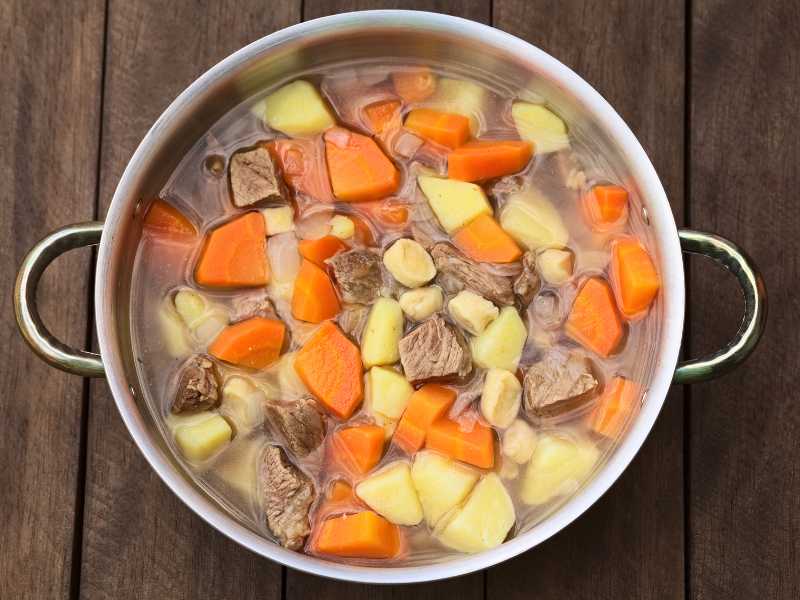
Húsleves is a traditional soup that typically consists of tender pieces of meat (such as beef, pork, or poultry) cooked in a flavorful broth along with an assortment of vegetables. Common vegetables used in Húsleves include carrots, potatoes, onions, and celery. The soup is often seasoned with salt, pepper, and various herbs and spices, giving it a rich and savory flavor.
Kókuszkocka/Čupavci
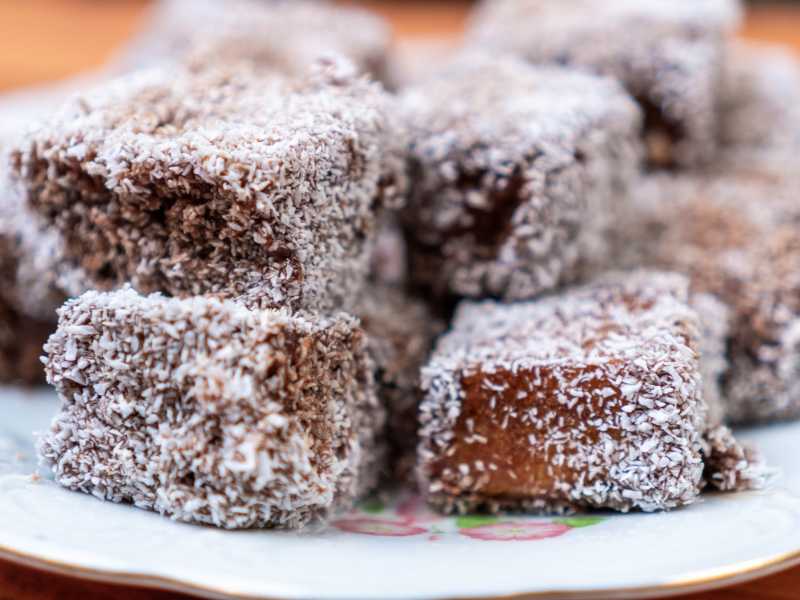
Kókuszkocka is a sweet treat consisting of small cube-shaped cakes made of sponge or sponge cake dipped in chocolate and then sprinkled with desiccated coconut. They are particularly popular throughout the Balkan countries where they are known as Čupavci and are often made for special occasions such as Christmas, birthdays, weddings and baptisms.
Kifli (Kilfa)
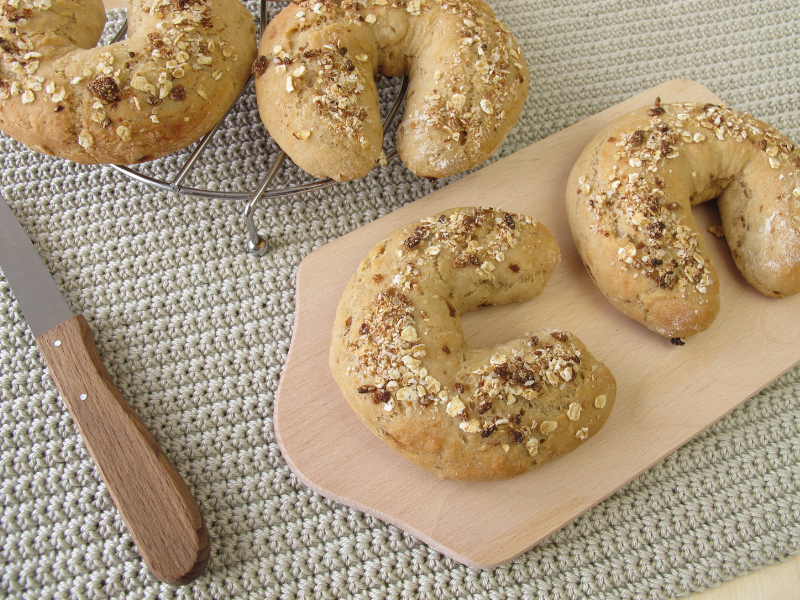
Kifli or Kifla is a sweet pastry snack in the shape of a crescent moon that is popular throughout Eastern Europe. It is similar to a croissant although it is made with a dough more similar to bread than to pastry. It is a staple for families all over Eastern Europe, served for breakfast, as a snack, or to accompany meals.
Kifli can be served plain, with seeds, sweetened, or filled with a variety of fillings.

